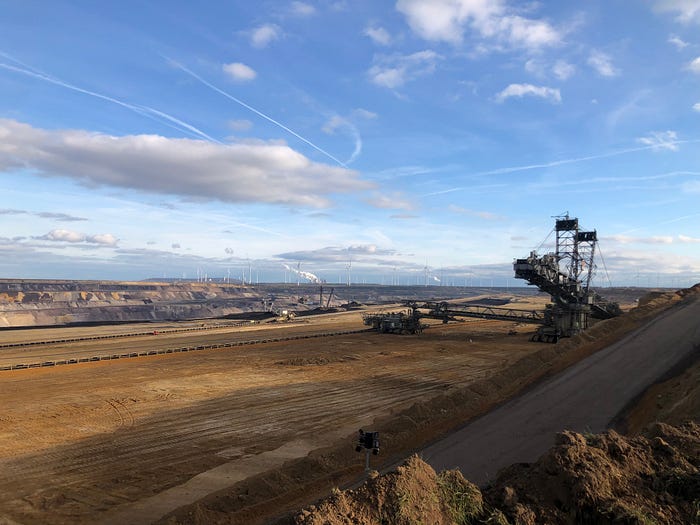
Standing on the Precipice
I’m standing on the precipice of the end of the world. I look out, and see death and destruction — land devoid of life, meaning, nature, or future. Monstrous machines hack away at the Earth, stealing everything held below. It will all be burnt or discarded. The machines are protected by riot police and private security, seemingly working as one. The state ensures that these deadly operations are not stopped for a moment. It’s uncharacteristically warm — 13C in early January — and I am reminded of the global nature of the environmental crisis we are in the midst of. I turn away, feeling a stinging tear in my eye, and walk across the embankment back to the village.
Because this isn’t a preachy analogy, this is the Garzweiler mine in West Germany, in the Province of North-Rhine Westphalia. This enormous mine extracts lignite, the dirtiest form of coal, from the Earth, to be burnt both domestically and internationally. Lignite produces 1388kg of CO2 for every tonne burnt.

The German government displaced 41,000 people to make way for the mine, and with RWE — the mine owners and largest energy company in Germany — planning further expansions, more people are being forced from their homes. The village of Lützerath is the most recent village to face demolition. This is facilitated by massive police operations, RWE’s right to dig ensured at enormous public expense. This is despite the fact that the “Green” party is not only the second-largest party in Germany’s national legislature, but also the largest party in the provincial government.
Germany is the largest country in the EU, which presents itself as a progressive bloc when it comes to international climate negotiations. They send delegations overseas to encourage other countries to minimise their coalmining, and to shift to renewables. When this is their behaviour on home turf, it is no wonder that such negotiations have failed to make so much as a dent in global greenhouse gas emissions.
Thousands of activists are now flocking to Lützerath, or Lutzi, as it is endearingly called, to protect the village from demolition. Barricades have been built, treehouses mounted, and trenches dug, to ensure that the village stays for as long as possible. The longer the eviction will take, the higher the chances that RWE and the German state will think twice before displacing people to dig for more coal.
The whole operation is organised on a shoe string, with barricades built with whatever is available, and supplies brought in on wobbly hand-pulled carts. The community is amazingly strong, with defenders coming from across Europe and beyond. Children run between us as we stack bricks to make another barricade, and groups of friends arrive every day to help, to learn, and to struggle. There is strong support from neighbouring villages, despite the fact that many locals are employed by RWE or related companies. Volunteers drive back and forth from across the country bringing supplies — everything from climbing gear to SIM cards are needed.

“It’s a symbolic fight,” said one experienced defending Lutzi. The general understanding is that this fight is lost, that Lutzi will fall and that the mine will expand. However, there is no sign that this dulls the fires in the hearts of the defenders. They know that every additional cost to building this mine matters, and improves the chances of this expansion being the mine’s last.
It’s going to be quite the fight to get them out.
We’re standing on the precipice. In front of us, there is more of the same. There is destruction, displacement and death. The damage done to our planet is as permanent as the Garzweiler mine, a gaping scar in the landscape.
But there is another way. We can defend our home, using whatever we’ve got, together with our communities. We can stand up to big polluters and the governments that support them. And we can create a more sustainable, more just future, which values our planet and everything on.
As we leave Lutzi, I see for the first time since I’d arrived a sign of nature’s resilience. Between the village and the mine, above a grassy strip no more than 50 meters wide, a buzzard hovers overhead, catching the updrafts created by the deep drop into the chasmic hole below. It dives into the grass and emerges victorious, with dinner in its mouth. It feels like a sign. Nature is with us, and we are defending our home together.
